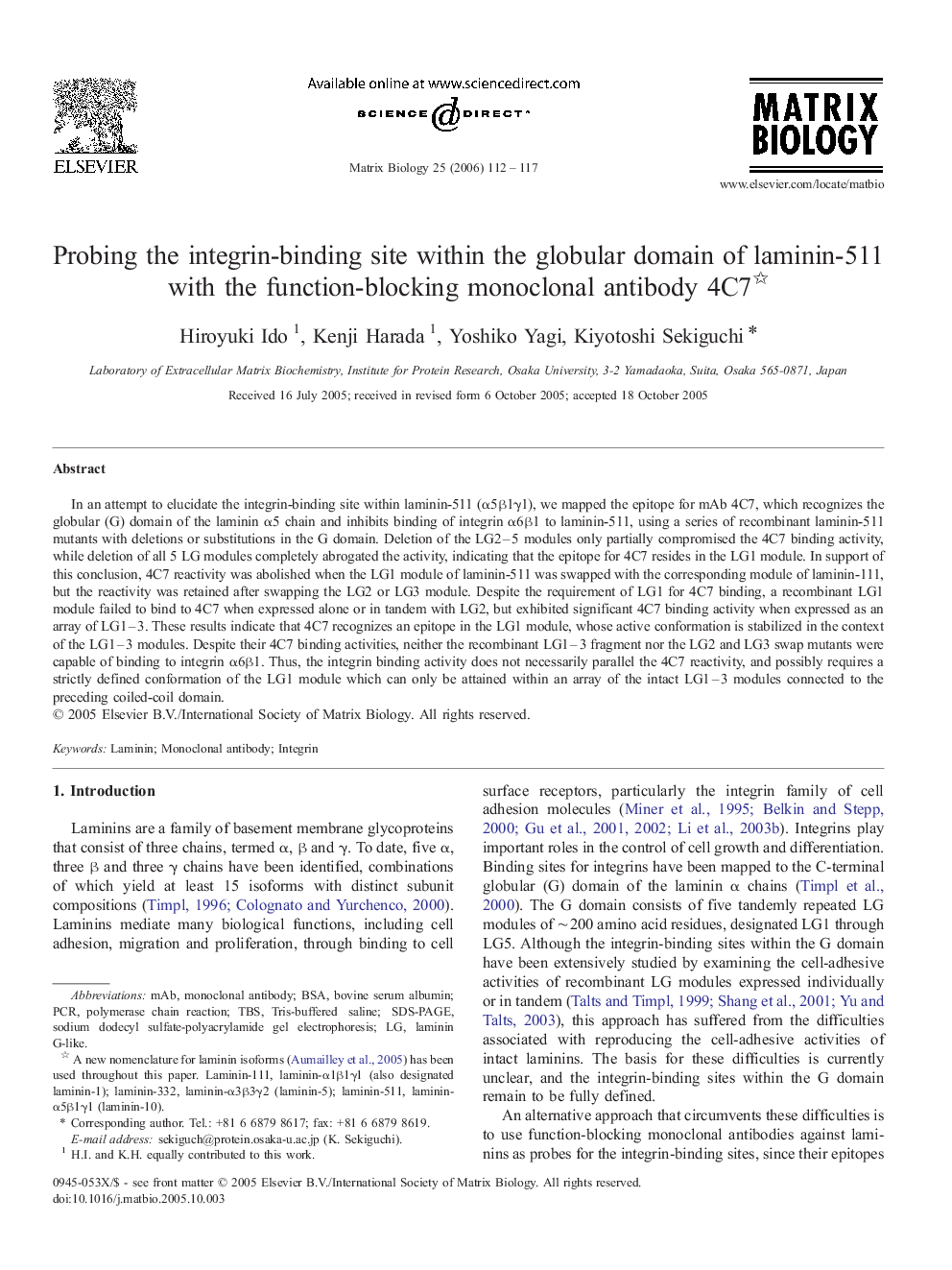| Article ID | Journal | Published Year | Pages | File Type |
|---|---|---|---|---|
| 2145533 | Matrix Biology | 2006 | 6 Pages |
In an attempt to elucidate the integrin-binding site within laminin-511 (α5β1γ1), we mapped the epitope for mAb 4C7, which recognizes the globular (G) domain of the laminin α5 chain and inhibits binding of integrin α6β1 to laminin-511, using a series of recombinant laminin-511 mutants with deletions or substitutions in the G domain. Deletion of the LG2–5 modules only partially compromised the 4C7 binding activity, while deletion of all 5 LG modules completely abrogated the activity, indicating that the epitope for 4C7 resides in the LG1 module. In support of this conclusion, 4C7 reactivity was abolished when the LG1 module of laminin-511 was swapped with the corresponding module of laminin-111, but the reactivity was retained after swapping the LG2 or LG3 module. Despite the requirement of LG1 for 4C7 binding, a recombinant LG1 module failed to bind to 4C7 when expressed alone or in tandem with LG2, but exhibited significant 4C7 binding activity when expressed as an array of LG1–3. These results indicate that 4C7 recognizes an epitope in the LG1 module, whose active conformation is stabilized in the context of the LG1–3 modules. Despite their 4C7 binding activities, neither the recombinant LG1–3 fragment nor the LG2 and LG3 swap mutants were capable of binding to integrin α6β1. Thus, the integrin binding activity does not necessarily parallel the 4C7 reactivity, and possibly requires a strictly defined conformation of the LG1 module which can only be attained within an array of the intact LG1–3 modules connected to the preceding coiled-coil domain.
